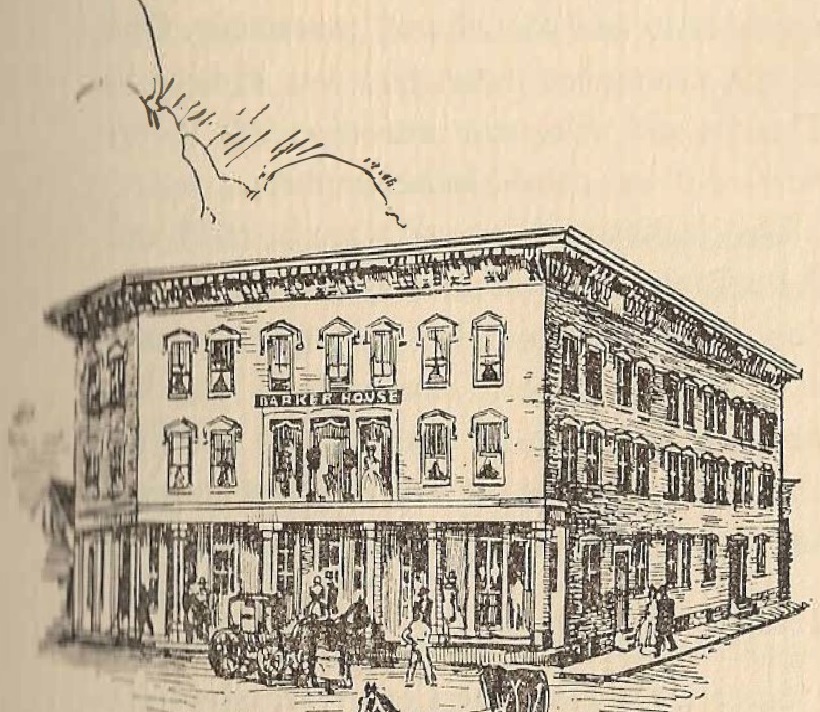Fulfilling Its Destiny |
|
|
THE many years that have followed the erection of the iron bridge have been years of much happiness, expansion, prosperity and contentment in tl1is ••beautiful valley between the hills'' that is the Gowanda of today. Despite the passing problems of wars, booms and depressions, Gowanda has been a community singularly able to keep its stride and carry forward that destiny of self-sustainment which has been such a priceless eritage from the days of its earliest settlers. If there can be such a place as a depressionproof community, Gowanda would deserve first ranking as a demonstrator of how it can be accomplished. It has been the genius, or the |
good fortune, of Gowanda—however you choose to look at it—to have achieved an unusually keen balance of industrial and agricultural activity. The value of such a balance was again shown as recently as the depression years of 1930 to 1937. Genuinely hard times were avoided here until the very last phases of that long recession and even then they were tempered and "managed" by the ability of Gowanda citizens to plan and pull together in times of stress. The abject poverty, bread lines, lost homes, bank failures and dispossessed families so prevalent in other communities were avoided surprisingly well in this stabilized and self-sustaining |
|
Page Fifty-four |
|

At the time of the great fire in 1856, Michael H. Barker was the proprietor of the Lodi House. After the fire he built this fine hotel known as the Barker House until it was destroyed by fire in 1875. In the ballroom of this hotel the ladies of Gowanda made the flag that was presented to Company A in 1861.
community that is the Gowanda of our time and day. |
The civic and community events since 1889 can be briefly recounted since the great majority of them have transpired within the memory of so many readers of this book. The Gowanda sewer system was constructed in 1896 at a cost of $19,000. J. C. Cunningham in. stalled the Gowanda Natural Gas Company in 1898. The fiftieth anniversary of the incorporation of the village was celebrated in 1898. The Gowanda Leader published a semi-centennial edition and I. R. Leonard wrote a ''Historical Sketch'' in book form. This book contained an interesting section of advertisements. A page by the Gowanda Co-operative Saving and Loan Association pointed out that in the first eight years of its existence it had operated without a loss, netted its investors 10 % and had only one foreclosure. The officers at that time were A. C. Stafford, President; H. R. Gaensslen, Vice-President; W. H. Bard, Treasurer; F. J . Herdeg, Secretary and F. J. Blackmon, Attorney. Gowanda had a national hero in the Spanish American War in Lieutenant Commander |
|
Page Fifty-five |
|
|
Frank H. Bailey. He was in command of the Warship ''Raleigh'' at the battle of Manila Bay. After the war he retired with the rank of rear admiral. Construction on the Homeopathic State Hospital was started in 1895, having been authorized by the state legislature the previous year. It is now recognized as one of the largest and most important institutions in the country. Five hundred acres were purchased on the ''Taylor Tract'' and Gowanda was designated by law as the place of communication with the hospital. The consistent expansion of the institution to date has involved an investment of more than $3,975,729 and it is now organized to care for 2,228 patients. Another humanitarian institution that has been of interest to Gowandians over the passing years is the Thomas Indian School on the Cattaraugus Reservation which dates back to 1856. At that time Asher Wright and his wife, Laura, were missionaries there. The winters were so severe that they took into their home then destitute Ind.ian children and cared for them. As it was apparent that more children needed that kind of support and instruction, the |
Quakers of Philadelphia and Baltimore were appealed to and contributed generously. One of the prominent supporters was Philips E. Thomas and when the institution was incorporated it was named in his honor. This incorporation took place in 1875 and the school was granted an annual appropriation of $8,500 which has subsequently been materially increased. The original wooden structure was replaced with a brick building about the turn of the century. It is now housing and training about 200 Indian children. Tanning Industry Since well before the Civil War, Gowanda was an important name in the tanning industry in this country. It has been one of the most important phases of industrial activity in the village for more than three generations. The first tannery in this district was started by Smith Bartlett on the Erie county side of the Cattaraugus between Collins Center and Collins. This was ''way back" in 1815. As mentioned on page 2 7, the first tannery in Gowanda was started by Samuel T. Munger in 1829. Among the early tanning operations in Gowanda was the Benton Brothers tannery |
|
Page Fifty-six |
|